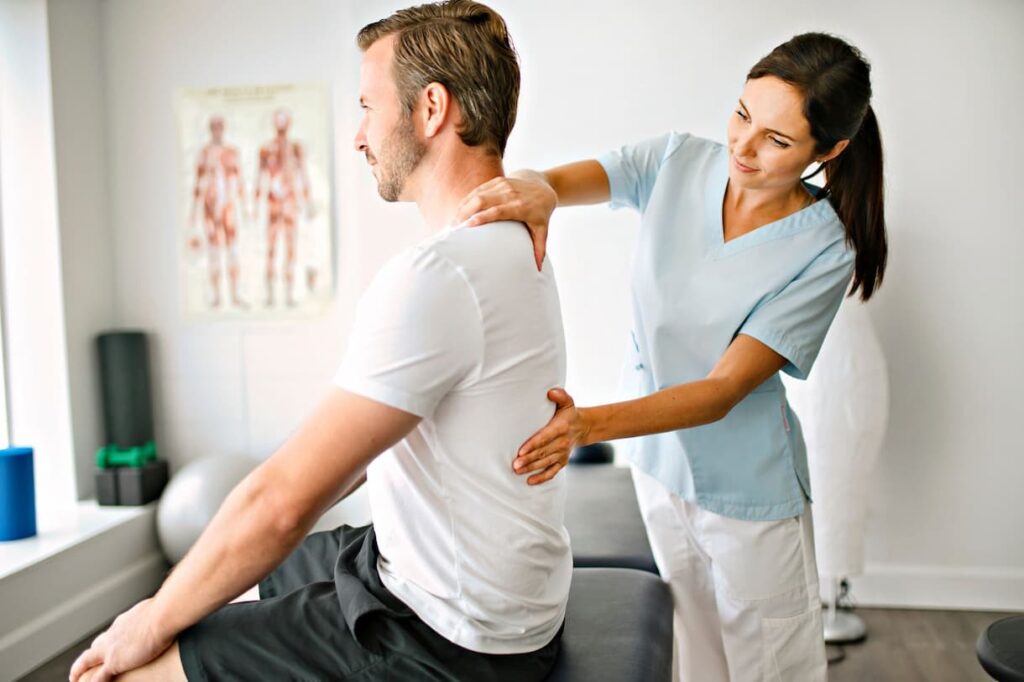The Latest Trends and Innovations in Physiotherapy

Acupuncture
Acupuncture and physiotherapy is the process of inserting tiny, solid metallic needles into the skin, which are subsequently triggered by gentle and particular motions of the practitioner’s hands or electrical stimulation. Acupuncture is an old treatment in Traditional Chinese Medicine. Traditional Chinese medicine practitioners believe that the human body has around 2,000 acupuncture sites connected by channels or meridians. These channels promote energy flow (Qi, pronounced “chee”) throughout the body, which is important for general health. Disruption of the energy flow can result in sickness. Acupuncture is supposed to increase the flow of Qi, which in turn improves health. Acupuncture Ashford Kent provides a comprehensive approach to well-being.
Exogen:
This wearable device functions in conjunction with the intrinsic movements of the body, delivering necessary support and assistance. EXOGEN is expanding the boundaries of possibility by providing assistance to individuals with spinal cord injuries and assisting stroke survivors in regaining mobility.
Aquatic Physiotherapy:
Who says treatment has to be dull and uninteresting? Nowadays, aquatic treatment is becoming more and more popular in the field of rehabilitation as a cutting-edge replacement for traditional methods. Patients can engage in low-impact activities that enhance impact because they experience reduced buoyancy and gravity when submerged in water. It is really enjoyable in addition to being therapeutic. Furthermore, the resistance provided by the water promotes the growth of strength and flexibility, which speeds up the healing process.
Lokomat:
Each step counts when it comes to relearning the ability to walk. At this point, Lokomat enters the picture. This robotic exoskeleton revolutionizes rehabilitation by providing patients with unmatched precision while guiding them through locomotor training. Lokomat offers individualized assistance to facilitate the gradual restoration of gait, whether it be for post-stroke rehabilitation or spinal cord injury recovery. It serves as a beacon of hope for those on the path to recovery; it is not merely a machine.
Virtual Reality:
Enter the domain of virtualization, where innovation and rehabilitation collide. Virtual reality (VR) is transforming physiotherapy through the development of individualized immersive environments for each patient. VR simulates balance challenges and interactive exercises, which while rehabilitating the body, transport users to new realms. Beyond therapeutic interventions, this experience embodies a transformative voyage of self-discovery and empowerment, wherein the limits of reality become indistinct, and the realm of possibilities broadens.
The Esko Suit:
Envision a superhero costume for the rehabilitation process—a garment that enhances your strength and mobility. The Esko Suit is an exoskeleton that can be worn and is intended to enhance human capabilities. This innovative suite transforms the experience of both patients and therapists by offering assistance with lifting large burdens and providing support during gait training. Beyond being a mere apparatus, it serves as an emblem of empowerment, motivating people to surpass constraints and wholeheartedly embrace their inherent capabilities.
Rehabilitation Robots:
During the era of automation, robots are not limited to manufacturing facilities; they are also assisting in the field of rehabilitation. By aiding clinicians in the execution of precise movements and targeted exercises, these mechanical marvels improve the treatment’s efficacy. Technological companions, such as robotic treadmills for gait training and autonomous arms for upper limb rehabilitation, are revolutionizing the field of physiotherapy. It is about establishing a collaborative alliance between humans and machines with the shared objective of enhancing wellness.
Acupuncture centers provide natural relief for various ailments, from chronic pain to stress.
Unconventional Approaches: Thinking Outside the Box
Hydrotherapy:
In an atmosphere that comforts the spirit, resistance training fortifies muscles while the buoyancy of water alleviates joint tension. It is a holistic experience that revitalizes the body and psyche, not just therapy.
Electric Stimulation:
A small systemic impact can sometimes be extremely beneficial, particularly in physiotherapy. Electric stimulation, commonly known as e-stim, stimulates healing and muscle activation via electrical impulses. This creative method is fueling improvements in the field of rehabilitation, whether via muscular strength improvement, pain reduction, or increased circulation.
Therapeutic Exercise:
Whether it be executing resistance exercises with bands or balancing on a stability ball, therapeutic exercise places the healing power in the hands of the patient. Reclaiming control over one’s body and devising a wellness-oriented course of action are more significant than mere compliance.
Conclusion:
One thing becomes evident as we traverse the perpetually changing terrain of physiotherapy: the present moment represents the future. We are expanding the limits of possibility with every innovation and breakthrough, enabling people to surmount challenges and reclaim their lives.
Current developments in physiotherapy are establishing a path towards a more promising and promising future, whether through the utilization of innovative techniques or the adoption of technological advancements. Therefore, let us don our exoskeletons, immerse ourselves in the therapeutic waters, and commence this profound expedition collectively—for rehabilitation; the possibilities are limitless. With its reputation for excellence, the Acupuncture Centre is a trusted destination for holistic health.
Read Also: The Physical and Mental Benefits of Regular Massage Therapy


